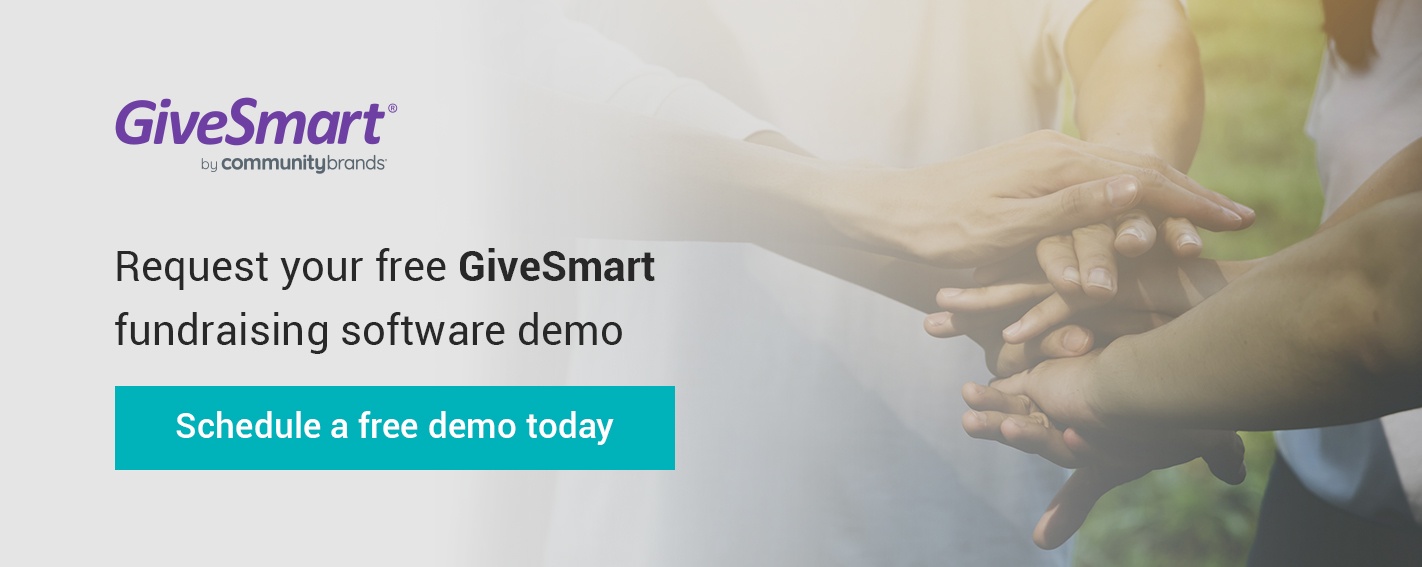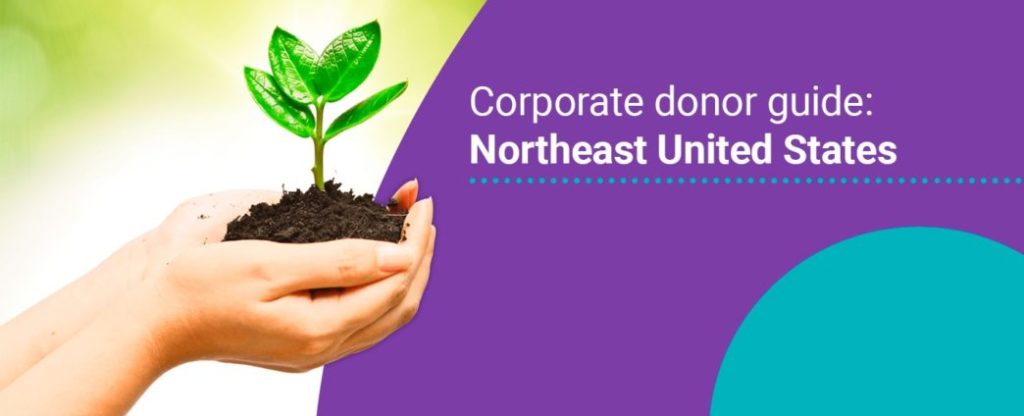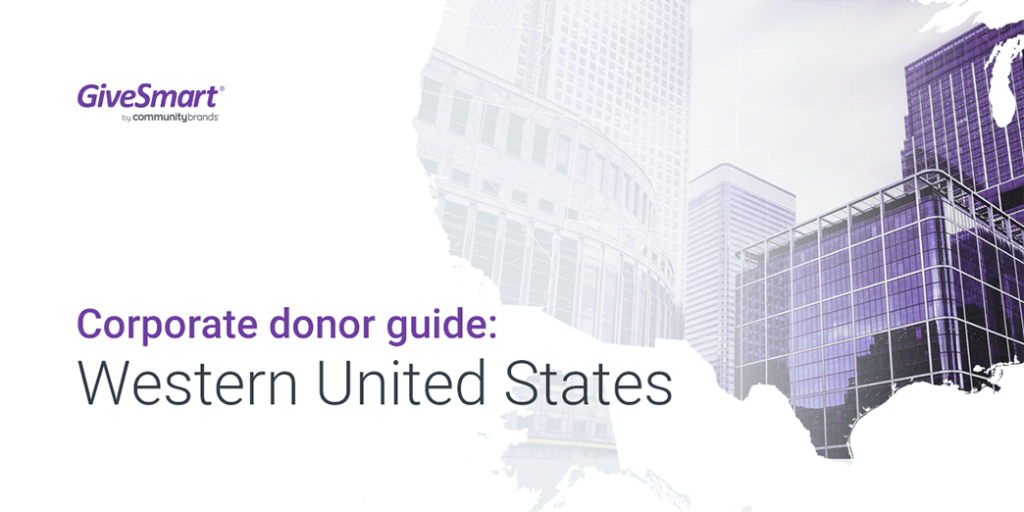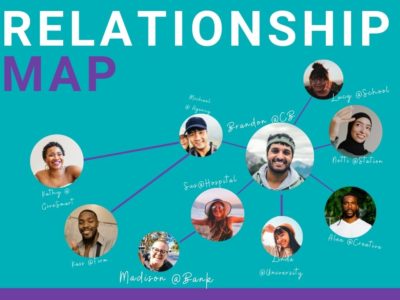Aug 20, 2019
Los Angeles Corporate Donor Guide
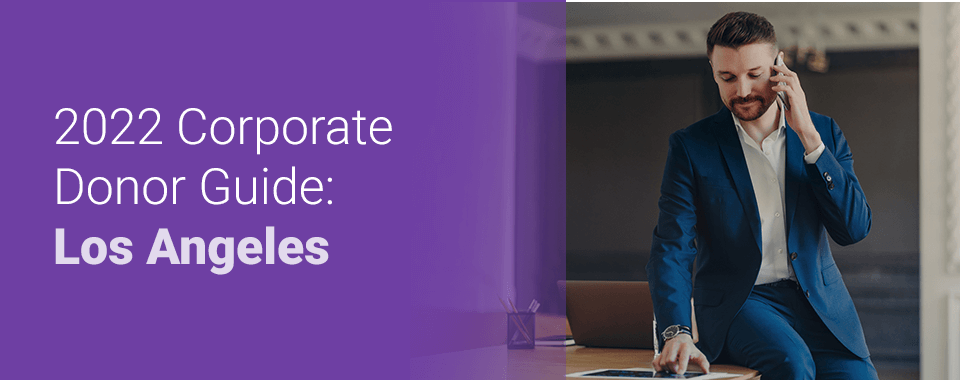

Sure, Los Angeles may have its Hollywood Walk of Fame. But you’re less likely to find the true stars of the city on the red carpet than you are in Tinseltown’s 70+ unique neighborhoods — in the nonprofits and their staff working tirelessly to make the city sparkle for those the paparazzi don’t follow around.
Los Angeles’ 71,000 nonprofits have committed to working toward the economic, social and cultural development of this unique city. These nonprofits, dedicated to a close-knit network of causes, serve the public good, but so often rely on private, corporate donations to execute their missions. How to get those corporate donations is top of mind for many Los Angeles nonprofits, which seek revenue to expand programming, buoy operations and generate sustained communal impact. It’s also where this guide steps in.
The Corporate Donor Guide to Los Angeles aims to assist nonprofits in finding, contacting and securing corporate sponsorships suited to your nonprofit segment and aligned with your mission.
In this guide, we’ll explore:
- Three reasons Los Angeles nonprofits are prime candidates for corporate philanthropy
- Top corporate donors in Los Angeles and Los Angeles County, by segment
- Tips and tricks for reaching out to corporate donors
- Technology to amplify nonprofit fundraising, so you can reach new goals and surpass new targets
- And more
We hope this guide inspires mutually beneficial and creative partnerships between your nonprofit and prospective corporate fundraisers, making this year your most successful year yet.
For more regional nonprofit donor guides, as well as general resources on fundraising and event management, see our nonprofit industry blog.
Three factors making Los Angeles an excellent city for nonprofits

Companies sponsoring nonprofit organizations often maintain a detailed set of philanthropic pillars, or tenets, providing the foundation for their charitable activities. Yet they also look for high areas of impact — neighborhoods, cities or entire counties where their resources will go farthest and spur measurable, positive development.
In the second-largest city in the United States, Los Angeles nonprofits find themselves located in an urban epicenter with significant opportunities to service lasting impact.
1. Active philanthropic identity
In its annual “Give Los Angeles” issue, Los Angeles Magazine reports residents and corporations come together to donate a whopping $11.2 billion to nonprofits annually.
The national donation rate surged in 2020 and an overall increase in giving in areas including community food banks and refrigerators in L.A., volunteer programs and private donations. L.A. residents are also investing their time, energy and money in mutual aid networks and direct person-to-person giving through online avenues like GoFundMe.
Even with the charitable downswing marking the latter half of the early 2000s, these figures place Los Angeles as a burgeoning philanthropic hub, not only in California but the wider western United States.
2. Diverse philanthropic marketplace
California is often progressive in terms of instating regulatory and policy instruments to spur social change. Nonprofit segments such as the environment, the arts and urban education, in particular, have seen distinct work achieved through the intersection of public and private initiatives.
Given its size, it’s no surprise the greater L.A. area experiences social, civic and economic hurdles intertwined with its urban sprawl. While impressive philanthropic work has taken place, Los Angeles remains considered one of the “homeless capitals of America,” with the second-highest rate of homelessness in the nation and a more general poverty level of 18% — significantly higher than the state average.
Its size, scale and history position L.A. as an epicenter of regenerative philanthropic activity. The city and surrounding county provide a setting for nonprofits to perform demonstrable change others can look to for guidance on funding and programming models.
3. Access to resources needed for success
L.A.’s size continues to draw a young and career-motivated workforce, as well as individuals possessing a range of skill sets and goals relevant to nonprofit work. It is also a premier business center in the state, housing 26 S&P Fortune 500 companies along with a microcosm of industry leaders in entertainment, real estate, finance, tech and more.
Together, this economic landscape of a premium workforce and exceptional companies make Los Angeles an incredibly attractive home for nonprofits. Data from California’s Association of Nonprofits reveals just how successful this combination can be, with California nonprofits:
- Producing one-sixth, or 15%, of the state’s gross state product
- Generating over $273 billion in revenue
- Employing over 1.2 million California residents
- Comprising the fourth-largest industry in the state, by employment rate
The vast majority of these nonprofit accomplishments are due to L.A.-based nonprofits and nonprofit work — and a significant reason new and established charities alike pick the City of Angels as their home.
Corporate donors by segment in Los Angeles
Below is a list of L.A.-area companies with an expressed commitment to working with area nonprofits.
We have cataloged each organization according to the cause, or segment, they highlight as a philanthropic pillar. Many cite numerous philanthropic pillars, revealing multifaceted community involvement and more partnership opportunities for your L.A. nonprofit.
This section also includes:
- A regional analysis of each major nonprofit segment as it affects and pertains to L.A.
- Direct links to their philanthropic outreach or corporate contact pages
- And more, providing insights into higher fundraising and corporate donations, today and tomorrow
1. The arts
No other city contains as many institutions dedicated to arts and entertainment as L.A.
The home of ever-fascinating Hollywood, Los Angeles is home to more entertainment studios per capita than any other place in the world. These same institutions are a defining reason arts and culture nonprofits find a welcoming, intuitive fit within L.A.
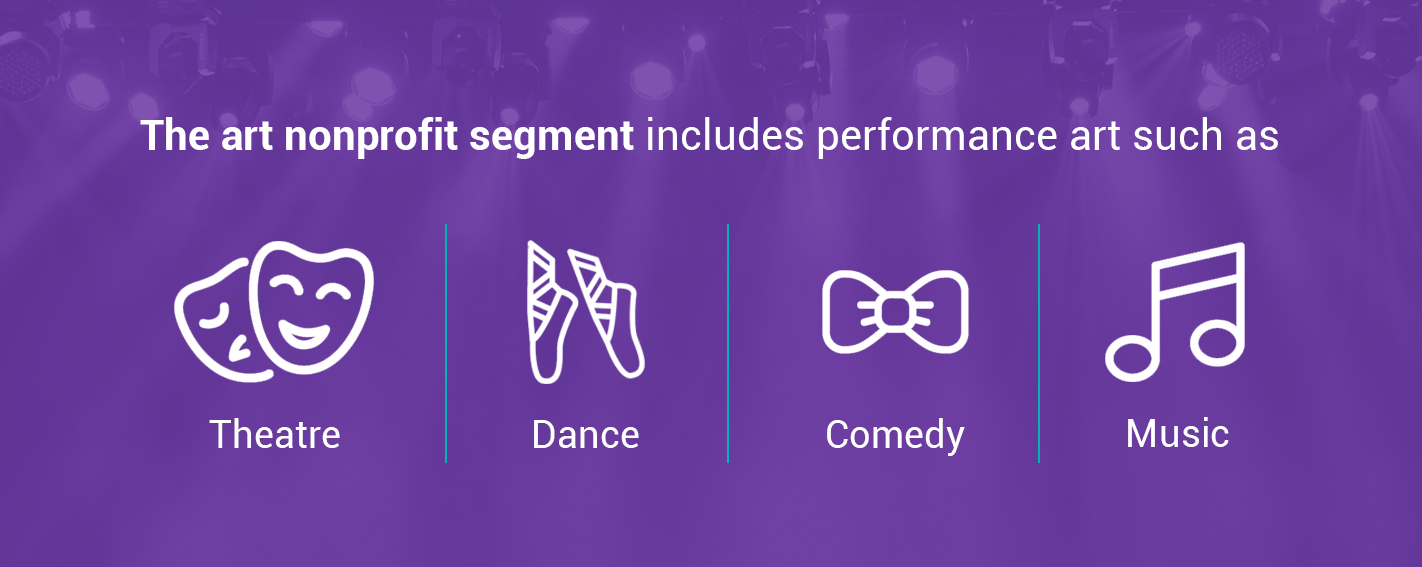
Within the city, this nonprofit segment includes performance art such as theatre, dance, comedy and music, as well as nonprofit museums, humanities societies, literary initiatives, fine arts programming and cultural tourism. Together, these combine to contribute $4.5 billion to California’s economy and an aggregate of 132,705 jobs.
Companies involved in the arts and entertainment fields themselves make intuitive corporate donors for nonprofits. Plenty of other L.A. organizations cite the arts as a philanthropic focus:
2. Children and education
Los Angeles’s Unified School District is the second-largest public education system in the country, behind only New York City. It holds below-average graduation rates for high school, with an estimated 78% graduating in 2019.
Nonprofit work for the children and education sector is two-pronged: First, many organizations create educational programming centered on assisting underprivileged and underfunded schools, with tutoring, mentorship and after-school activities for their children. Second, education nonprofits in L.A. also work to support opportunities for continued education and career preparation, particularly for the systemically disadvantaged such as immigrants, the homeless, first-generation college students, LGBT+ individuals and more.
L.A.-based companies that donate to youth, education and career preparation causes locally include:
3.Civil rights and services
Despite L.A. County maintaining one of the nation’s largest health and social-services systems in the country, Los Angeles still contains the nation’s highest concentration of homeless people — an estimated 4.7% of whom are under 18.
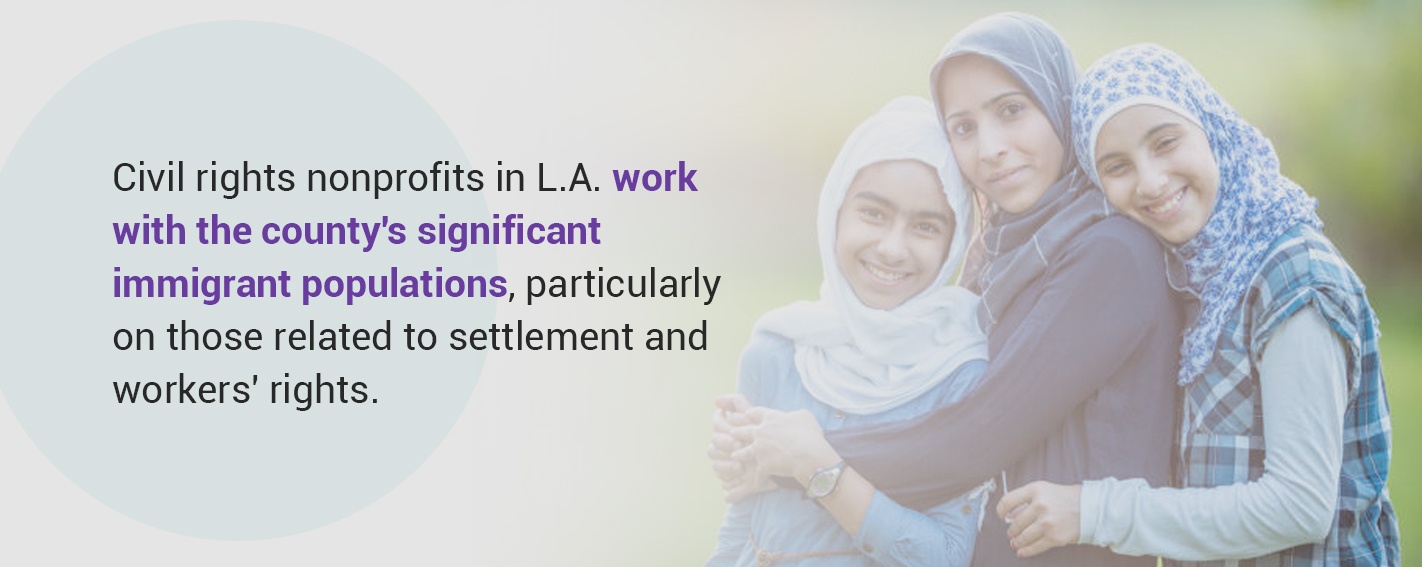
Homelessness or housing-induced poverty is one of the dozens of converging issues civil rights and social services nonprofits are working to address. From crisis shelters and food and clothing banks to substance dependency resources and pro bono legal services, this segment is often on the front line of intersectional inequalities spanning age, race, ethnicity and socioeconomic status. Civil rights nonprofits in L.A. also work with the county’s significant immigrant populations, particularly on those related to settlement and workers’ rights.
L.A. businesses with stated commitments to civil rights and social services include:
4. Health care
Roughly 7.3% of California’s citizens have no health insurance. Uninsured populations tend to concentrate in areas of institutionalized poverty, most notably throughout rural southern California, but increasingly in many of Los Angeles’ south and south-central neighborhoods.
Health services nonprofits perform primary and secondary services in areas with limited access to health care. They also sponsor health education programming, as well as research into improving health outcomes that particularly affect specific L.A. populations.

Businesses making donations to health care nonprofits and causes throughout L.A. include:
5. Environment
Los Angeles — and, indeed, the greater state of California — have long been a harbinger of environmental policy and legislation in the United States.
L.A. itself has long mitigated environmental and sustainability concerns related to air quality, urban green canopies and, most pressingly, water consumption. These concerns have driven city and county measures with specific sustainability targets and outcomes well past 2020. L.A.’s 50+ nonprofit environmental organizations have collaborated on many of these measures, spearheading everything from renewable energy infrastructure development to urban farming, agriculture and tree-planting initiatives.
Many of the city’s corporate donors recognize environmental causes as a top philanthropic area of focus, including:
6. Emergency services/disaster relief
Emergency services and disaster relief constitutes a small, yet essential, niche of nonprofits operating in greater Los Angeles.
Geographically, the city’s location and interrelated climate conditions make it susceptible to a wide range of natural disasters, including heatwaves, wildfires, earthquakes, mudslides and even flooding. The effects of human-accelerated global warming in California have only intensified these issues, particularly disaster relief pertaining to increasing temperatures, longer wildfire seasons and rising sea levels.
L.A. nonprofits working in emergency services also provide services in family assistance, residential care and temporary and long-term shelters, to name a few of their areas of focus.
Businesses with philanthropic ties to emergency servicing and disaster relief in L.A. include:
- Ares Management
- California Resources Corporation
- Cathay Bank
- CBRE
- City National Bank
- Edison International
- Farmers Insurance
7. Food security
More than half a million L.A. households experience food insecurity, a status federal poverty level statutes define as “disrupted eating patterns and reduced food intake” where residents must travel more than one mile to access a full-service grocery store.
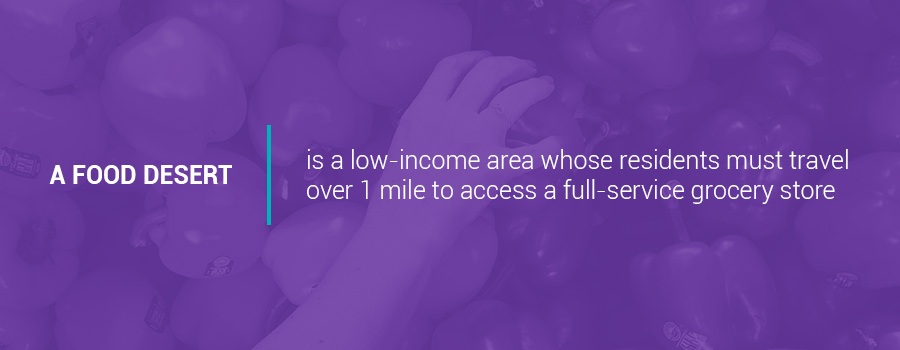
In Los Angeles County alone, over 13% of the population lives at or below the poverty level, compared to the 11.4% national average. Poverty is the single leading factor contributing to a household’s food insecurity, inspiring those in this nonprofit sector to combat systemic issues related to both, including accessible public transportation, rent control, agricultural and food policy, farmers’ market support and more.
These L.A. companies express interest in supporting nonprofits that address local and regional food insecurity:
8. Urban development
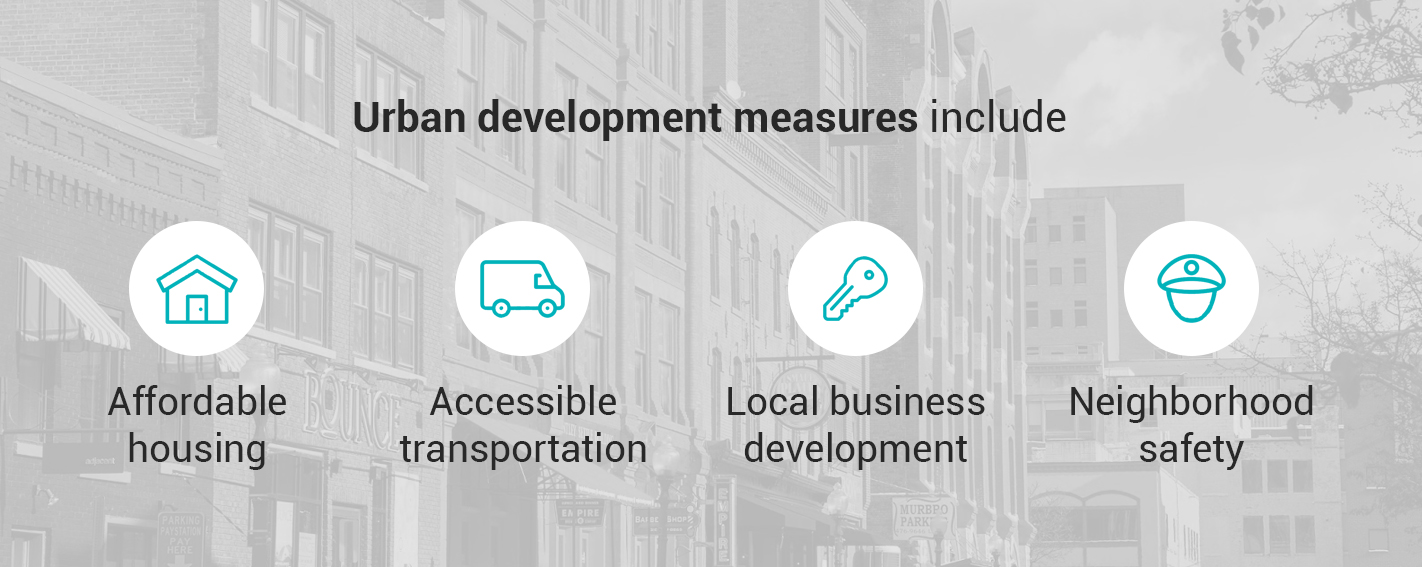
Los Angeles’ nonprofits in the urban renewal sector seek to remedy many of the infrastructure discrepancies of past urban initiatives. Neighborhood revitalization programs with good intentions to transplant funds into low-income neighborhoods historically resulted in resident displacement, local business bankruptcies and wider gentrification.
With 18% of Los Angeles’ population living below the federal poverty level, many of L.A.’s urban development initiatives now target micro-neighborhood issues to combat yesterday’s mistakes. These measures include affordable housing, accessible transportation, local business development, neighborhood safety and more.
9. Veterans assistance
Just over 5% of L.A’s unhoused population are veterans. The area’s homeless veterans demographics have been on the decline since 2017, thanks in large part to the city’s veterans assistance nonprofits and advocates. It is also the only homeless demographic in Los Angeles County to see any statistical decrease since the government took steps in 2015 to reduce area homelessness rates, namely through ongoing structural support to increase affordable housing, homeownership incentives, government funding and poverty-related social support.
Veterans affairs nonprofits work tirelessly to combat issues affecting U.S. veterans at higher rates, including mental and physical disabilities, social reintegration, accessible housing and transportation and health care.
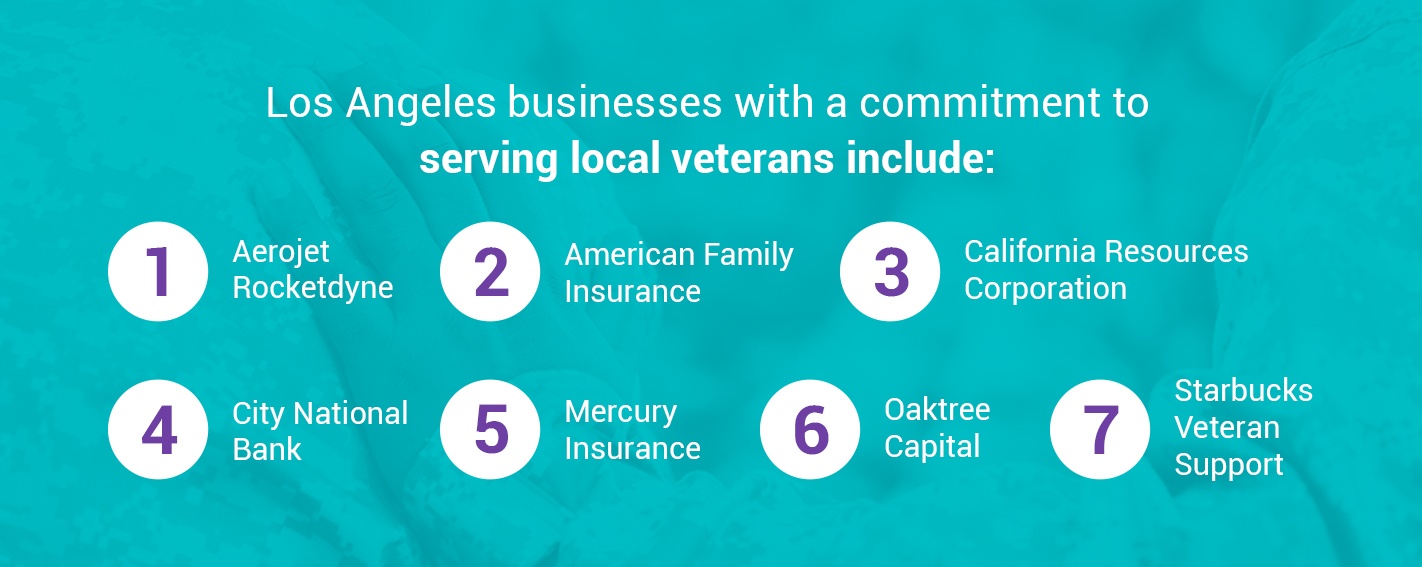
Los Angeles businesses with a commitment to serving local veterans include:
- Aerojet Rocketdyne
- American Family Insurance
- California Resources Corporation
- City National Bank
- Oaktree Capital
- Starbucks Veteran Support
Nonprofit tips for reaching out to Los Angeles corporations for sponsorships
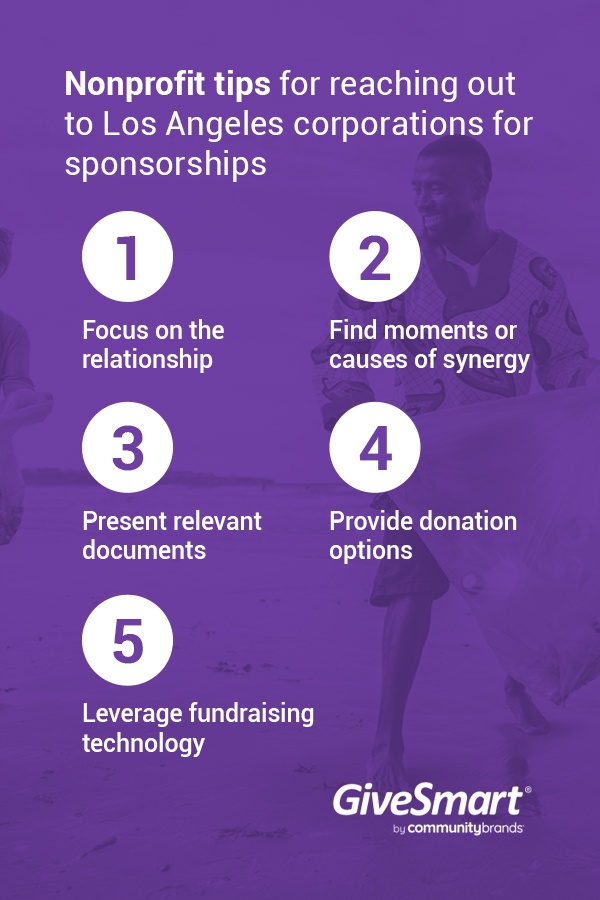
There are several tips to keep in mind when approaching businesses to increase Los Angeles fundraising and secure more donations for your nonprofit.
1. Focus on the relationship
Relationships are at the core of a nonprofit’s work. From daily interfacing to annual, long-term programming, nonprofits seek to make positive changes in the lives of real people — changes that last long after implementation.
Don’t expect corporate partnerships to fall into your lap. Similarly, refrain from assuming a previous corporate donor will reengage this year just because they have in the past. The best corporate-nonprofit partnerships take time and continual communication, engaging the organization in a way that makes them feel valued beyond a checkbook.
Consider all the ways you can engage corporate donors to nurture an ongoing relationship:
- Create volunteer opportunities for corporate employees
- Hold special thank-you events
- Share impact stories and testimonies
- Appoint corporate donors to sit on your boards and committees
- Send corporate donors a print or email newsletter
- Give donor shout-outs on your website or social media
- Invite donors to industry events
- Generally check in on key corporate touchpoints every few months via phone or email
2. Find moments or causes of synergy
Prioritize reaching out to companies whose products or services align with your nonprofit’s in some way.
For example, organizations focused on housing and urban renewal would find organic alignment partnering with construction or real estate. Organizations committed to workers’ rights may reach out to a fair trade coffee brand. Financial literacy programs can position themselves as a great pro bono volunteer and sponsorship program for accountant and financial advisory firms. The more transparent the connection, the better.
Aligning nonprofit-sponsor interests also serves to boost positive exposure for both parties. Your nonprofit should be proud of the names on its corporate sponsorship list, just as businesses should be proud of their corporate social outlets and social responsibility.
3. Present relevant documents
It’s likely you or a staffer or volunteer has written a letter of intent (LOI) during a past fundraising initiative.
Letters of intent demonstrate your interest in a grant or fundraising opportunity. More importantly, they begin to illustrate the professionalism, maturity and attention to detail with which your nonprofit operates.
Corporations will be far more inclined to sponsor nonprofits that present formal documentation as part of their partnership pitches. Relevant materials to send in a corporate pitch may include your nonprofit’s:
- Business plan
- Strategic or annual report
- Statements of financial position/balance sheets
- Income statements
- Impact case studies
- Calculated social returns on investments from previous initiatives
- Volunteer impact reports
- Full event calendar
4. Provide donation options
Too many nonprofits still rely on outdated or one-way donation models.
While direct donations are still vital — particularly when it comes to sponsoring a specific nonprofit event or program — more ongoing, continuous donation models and platforms help create constant flows of revenue. Compared to ad-hoc donations, these fundraising options provide sustainability and peace of mind to L.A. nonprofits already competing for funding.
We’ve seen nonprofits financially partner with area businesses in several forms:
- “Round-up” campaigns: As a donation trend gaining more popularity across the past decade, round-up campaigns allow a business’ customers to round their purchase up to the nearest dollar, with the proceeds going to your charity.
- Awareness campaigns: Monetary and non-monetary campaigns help get your nonprofit’s name out in the community, generating brand, event and impact awareness.
- Full sponsorship: Include details of how you plan to promote the sponsorship before and during the event — social media, press releases, event graphics, brochures, media interviews, etc.
- Recurring monthly gifts: Consider offering options both with a business or company itself and with that business’ employees.
- Plus more strategic fundraising ideas
5. Leverage fundraising technology
Event-management software like GiveSmart helps create win-win collaborations for both corporations and nonprofits in Los Angeles.
These fundraising technologies don’t make you start raising money from scratch — they amplify the fundraising you already do, bringing in more donations with half the traditional work. With GiveSmart, your nonprofit can graduate to better, easier modes of sponsorships, with some GiveSmart users seeing a 30% increase in fundraising totals. Create and administer:
- Text-to-give campaigns
- Online auctions with real-time mobile bidding
- Mobile fundraising campaign management and analytics
- Donor communications portal
- Customized evergreen online donation hub
- And more
Request your free GiveSmart fundraising software demo
Ready to engage more private and corporate donors in L.A. — and take your fundraising to the next level? Schedule a free, no-obligation demo with GiveSmart’s mobile management software today.
Related

